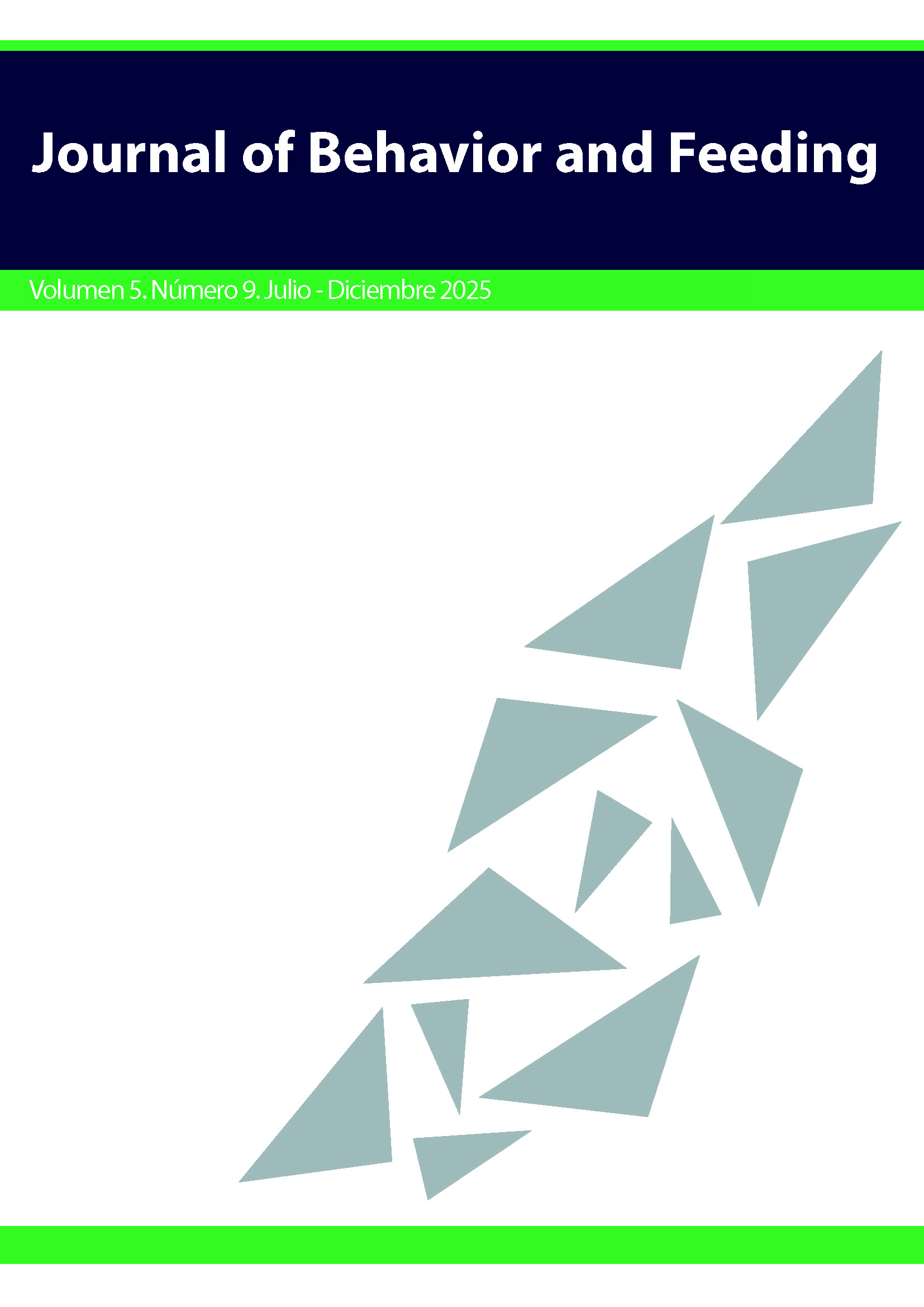Efectos del consumo de proteína a base de pasto verde de trigo y meditación sobre la oxigenación en sangre en jóvenes del Centro Universitario de los Valles
DOI:
https://doi.org/10.32870/jbf.v5i9.72Palabras clave:
oxigenación en sangre, proteína de pasto verde de trigo, meditaciónResumen
El presente proyecto es un trabajo interdisciplinario que vincula conocimientos de la nutrición y la psicología. Específicamente, se evaluó el efecto del consumo de un suplemento alimenticio a base de pasto verde de trigo (marca Bien Verde) sobre la oxigenación en sangre en jóvenes estudiantes del Centro Universitario de los Valles de la Universidad de Guadalajara. En cuanto al componente psicológico, se examinó el efecto de la meditación guiada sobre el mismo indicador fisiológico. Ambos factores fueron evaluados de manera individual y en combinación, mediante dos diseños experimentales: uno intraparticipante y otro entre grupos. Los resultados mostraron un patrón consistente en ambos diseños, en el que los mayores incrementos de oxigenación se observaron en el grupo que consumió pasto de trigo, seguido del grupo combinado, el grupo de meditación, y finalmente el grupo control. Sin embargo, solo en el diseño entre grupos se observaron diferencias estadísticamente significativas, particularmente en la comparación entre el grupo control y los grupos con intervención (Meditación, Proteína y Combinado).
Descargas
Citas
Alfaro, L. (2023). La oxigenación en sangre de pacientes con Covid-19: una variable dependiente de aspectos comportamentales. En H. E. Reyes Huerta, F. H. Martínez Sánchez, I. Zepeda Riveros, y F. Cabrera González (Eds.), Aproximaciones actuales sobre conducta y sus aplicaciones (pp. 355–375). Universidad Autónoma de Aguascalientes.
Almaraz-Fukushima, C. (2019). Germinando tu salud: Los beneficios del pasto de trigo. Ediciones Trascendamos. https://books.google.es/books?hl=es&lr=&id=da-uDwAAQBAJ&oi=fnd&pg=PA8&dq=almaraz+fukushima&ots=8AKROkZmdI&sig=gYsC5ikNGRB5leMxwq1rryN8kpE#v=onepage&q=almaraz fukushima&f=false
Ankad, R. B., Herur, A., Patil, S., Shashikala, G. V, y Chinagudi, S. (2011). Effect of short-term pranayama and meditation on cardiovascular functions in healthy individuals. Heart Views, 12(2), 58–62. https://doi.org/10.4103/1995-705X.86016
Bernardi, N. F., Bordino, M., Bianchi, L., y Bernardi, L. (2017). Acute fall and long?term rise in oxygen saturation in response to meditation. Psychophysiology, 54(12), 1951–1966. https://doi.org/10.1111/psyp.12972
CIOMS (2016). Pautas éticas internacionales para la Investigación relacionada con la salud con seres humanos (4ta edición). https://cioms.ch/wp-content/uploads/2016/08/PAUTAS_ETICAS_INTERNACIONALES.pdf
Diez, G. G., y Castellanos, N. (2022). Investigación de mindfulness en neurociencia cognitiva. Revista de Neurología, 74(5), 163–169. https://doi.org/10.33588/rn.7405.2021014
Gagrani, M., Faiq, M. A., Sidhu, T., Dada, R., Yadav, R. K., Sihota, R., Kochhar, K. P., Verma, R., y Dada, T. (2018). Meditation enhances brain oxygenation, upregulates BDNF and improves quality of life in patients with primary open angle glaucoma: a randomized controlled trial. Restorative Neurology and Neuroscience, 36(6), 741–753. https://doi.org/10.3233/RNN-180857
Gupta, E., y Mishra, P. (2021). Functional food with some health benefits, so called superfood: a review. Current Nutrition & Food Science, 17(2), 144–166. https://doi.org/https://doi.org/10.2174/1573401316999200717171048
Handzel, M., Sibert, J., Harvey, T., Deshmukh, H., y Chambers, C. (2008). Monitoring the oxygenation of blood during exercise after ingesting wheatgrass juice. The Internet Journal of Alternative Medicine, 8(1), 1–5.
Huang, B., Huang, Y., Zhai, M., Zhou, Q., Ji, S., Liu, H., Zhuang, X., Zhang, Y., y Zhang, J. (2023). Association of hypoxic burden metrics with cardiovascular outcomes in heart failure and sleep?disordered breathing. ESC Heart Failure, 10(6), 3504–3514. https://doi.org/10.1002/ehf2.14526
Kulkarni, S. D., Acharya, R., Rajurkar, N. S., y Reddy, A. V. R. (2007). Evaluation of bioaccessibility of some essential elements from wheatgrass (Triticum aestivum L.) by in vitro digestion method. Food Chemistry, 103(2), 681–688. https://doi.org/10.1016/j.foodchem.2006.07.057
Lucas-González, R. (2017). Digestión de alimentos: Tendencias en los modelos de digestión in vitro. Revista Doctorado UMH, 2(2), 5. https://doi.org/10.21134/doctumh.v2i2.1278
Mandlik, G. V, Siopis, G., Nguyen, B., Ding, D., y Edwards, K. M. (2024). Effect of a single session of yoga and meditation on stress reactivity: A systematic review. Stress and Health, 40(3), e3324. https://doi.org/10.1002/smi.3324
Melnychuk, M. C., Dockree, P. M., O’Connell, R. G., Murphy, P. R., Balsters, J. H., y Robertson, I. H. (2018). Coupling of respiration and attention via the locus coeruleus: Effects of meditation and pranayama. Psychophysiology, 55(9), e13091. https://doi.org/10.1111/psyp.13091
Melville, G. W., Chang, D., Colagiuri, B., Marshall, P. W., y Cheema, B. S. (2012). Fifteen minutes of chair?based yoga postures or guided meditation performed in the office can elicit a relaxation response. Evidence?Based Complementary and Alternative Medicine, 2012(1), 501986. https://doi.org/10.37349/emed.2022.00104
Minocha, N., Saini, S., y Pandey, P. (2022). Nutritional prospects of wheatgrass (Triticum aestivum) and its effects in treatment and chemoprevention. Exploration of Medicine, 3(5), 432–442. https://doi.org/10.37349/emed.2022.00104
Mujoriya, R., y Bodla, R. (2011). A study on wheat grass and its Nutritional value. Food Science and Quality Management, 2, 1–8. https://threeelementsinc.org/wp-content/uploads/2015/01/A_study_on_wheat_grass_and_its_Nutritional_value-libre.pdf
Oliaei, S., SeyedAlinaghi, S., Mehrtak, M., Karimi, A., Noori, T., Mirzapour, P., Shojaei, A., MohsseniPour, M., Mirghaderi, S. P., Alilou, S., Shobeiri, P., Azadi Cheshmekabodi, H., Mehraeen, E., y Dadras, O. (2021). The effects of hyperbaric oxygen therapy (HBOT) on coronavirus disease-2019 (COVID-19): a systematic review. European Journal of Medical Research, 26(1), 96. https://doi.org/10.1186/s40001-021-00570-2
Organization, W. H. (2020). Clinical management of COVID-19: interim guidance, 27 May 2020. World Health Organization.
Pascuzzi, M. A., y Chambers, C. C. (2009). Does wheatgrass juice oxygenate the blood of resting individuals. The Internet Journal of Alternative Medicine, 7(2).
Pérez-Padilla, J. R., Thirión-Romero, I. I., Aguirre-Pérez, T., y Rodríguez-Llamazares, S. (2020). How silent is hypoxemia in COVID-19? Neumologia y Cirugia de Torax(Mexico), 79(2), 69–70. https://doi.org/10.35366/94629
?ahin, B., y ?lgün, G. (2022). Risk factors of deaths related to cardiovascular diseases in World Health Organization (WHO) member countries. Health & Social Care in the Community, 30(1), 73–80. https://doi.org/10.1111/hsc.13156
Shah, K., Adhikari, C., Sharma, S., Saha, S., y Saxena, D. (2022). Yoga, meditation, breathing exercises, and inflammatory biomarkers with possible implications in COVID?19: A systematic review and meta?analysis of randomized controlled trials. Evidence?Based Complementary and Alternative Medicine, 2022(1), 3523432. https://doi.org/10.1155/2022/3523432
Tang, C.-J. C., Fu, R.-H., Wu, K.-S., Hsu, W.-B., y Tang, T. K. (2009). CPAP is a cell-cycle regulated protein that controls centriole length. Nature Cell Biology, 11(7), 825–831. https://doi.org/10.1038/ncb1889
Zabetakis, I., Lordan, R., Norton, C., y Tsoupras, A. (2020). COVID-19: The inflammation link and the role of nutrition in potential mitigation. Nutrients, 12(5), 1466. https://doi.org/10.3390/nu12051466
Zou, Q., Lai, Y., y Lun, Z.-R. (2023). Exploring the association between oxygen concentration and life expectancy in China: A quantitative analysis. International Journal of Environmental Research and Public Health, 20(2), 1125. https://doi.org/10.3390/ijerph20021125
Publicado
Cómo citar
Número
Sección
Licencia
Derechos de autor 2025 Autores

Esta obra está bajo una licencia internacional Creative Commons Atribución 4.0.
This is an open-access article distributed under the terms of the Creative Commons Attribution License (CC BY). The use, distribution or reproduction is permitted, provided the original author(s) and the copyright owner(s) are credited and that the original publication in this journal is cited, in accordance with accepted academic practice. No use, distribution or reproduction is permitted which does not comply with these terms.









